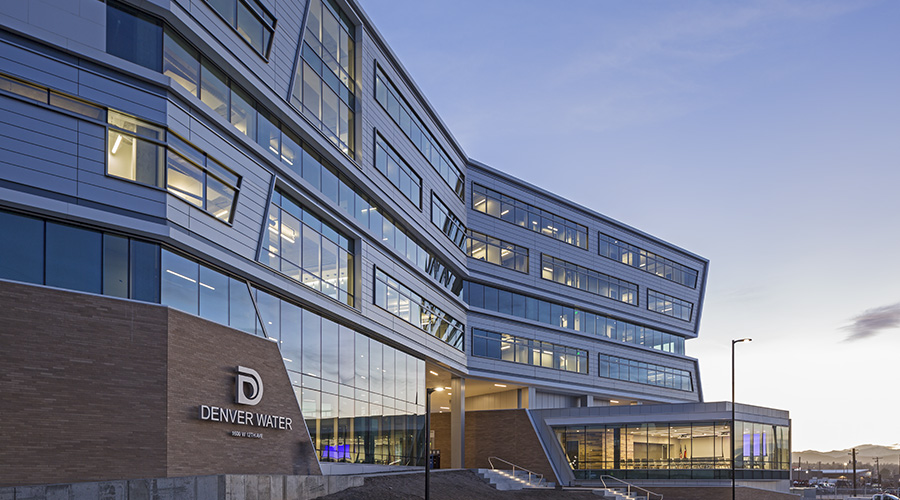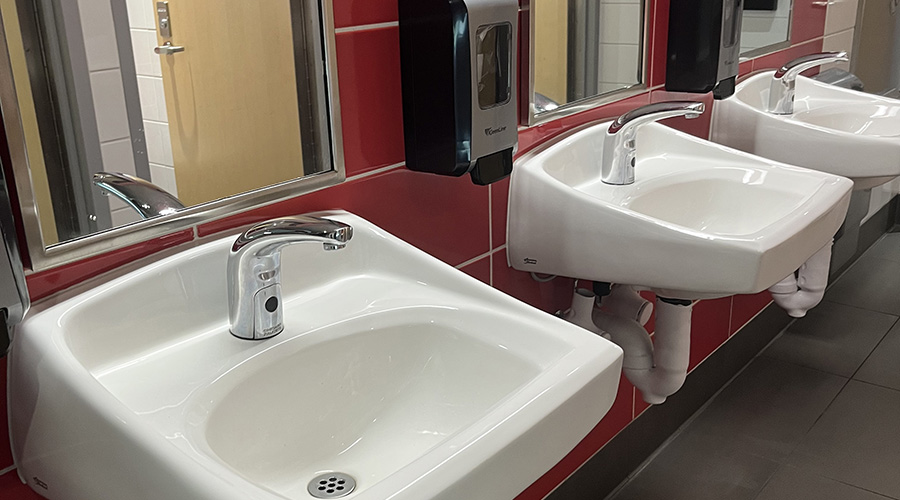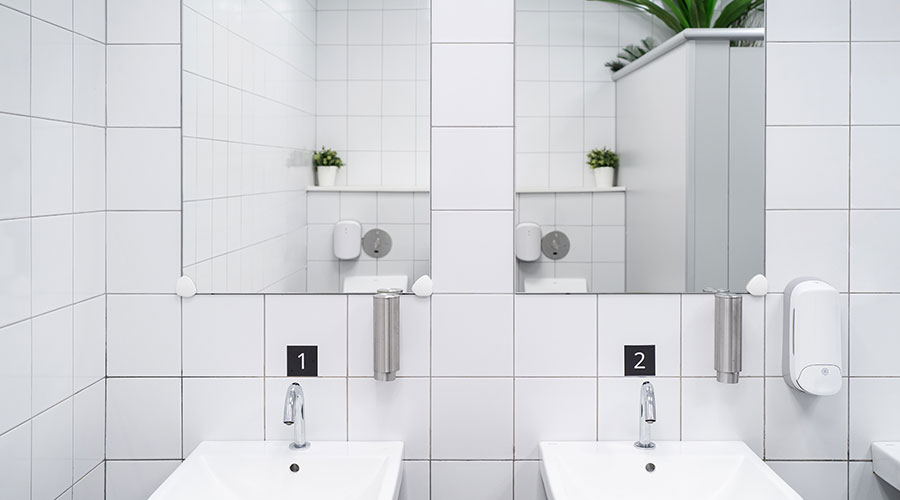Plumbing: The Repair-Replace Decision
Searching for the tipping point when it comes to maintaining versus upgrading systems
By Pieter J. van der Have
The efficient operation and effective maintenance of plumbing systems go beyond providing a reliable water supply for facility operations. They also are essential for conserving water and minimizing costs tied to repair time and spare parts.
But maintenance only goes so far, and at some point, components and entire systems reach the end of their service lives. How can managers determine the best time to stop devoting resources to maintaining existing fixtures and components and upgrade to new fixtures?
The answer lies in a manager’s ability to compile and analyze data on maintenance activity. Once that step is complete, the challenge becomes a matter of dollars and sense.
System Evolution
One common denominator among plumbing systems in most, if not all, institutional and commercial facilities is they receive too little attention until it is too late. Most structures are more than 30 years old, and it is safe to assume most plumbing systems, especially the parts hidden inside walls or in the ground, are probably just as old.
Surveys show the average replacement for these systems is about 2 percent per year for older fixtures in cases where a specific justification or driving force exists for replacement, such as water conservation. The remaining accumulated cost of subsequent deferred maintenance is significant, particularly considering internal plumbing systems represent a sizable portion of a new building’s construction cost.
Fifteen years ago, the desire for energy and water conservation kicked off a minor tsunami in the expected performance of new buildings. In response, products available to designers and building managers and owners went through a design evolution.
Soon, as managers were coordinating the renovation of existing buildings, they were specifying toilet fixtures that promised to save more than 40 percent of the water associated with one flush.
Managers learned the slope, size and even composition of downstream sanitary sewer lines often were inadequate to transport waste to main trunk lines with the decreased water flow, and waterless urinals have added to this situation.
The situation has led to a sobering question: Can managers identify and quantify savings in water costs from renovations, either to use them for any resulting repair requirements or for other improvements and replacements?
Replacement Issues
In spite of plumbing-system upgrades triggered by the desire for conservation, managers still face a significant backlog of inferior systems and components. So how can they now go about replacing the rest of the systems? Should they wait for a catastrophic failure? That approach is not the best way to do business.
On the other hand, should managers identify the total cost for replacing the entire system, anticipating complete failure? Clearly, with rare exceptions, that strategy is only going to remain a dream in most organizations.
Even though the cost of a new system in a new building is about 5 percent of a building’s construction cost, the demolition and reconstruction of interior walls will drive the replacement cost for a plumbing system much higher.
So in the case of a hypothetical 40,000-square-foot office building, with a current replacement value (CRV) of $5 million, replacing the plumbing system within that building likely would cost more than $250,000. This figure does not include the loss of income or business opportunity for tenants in the building, as work is disrupted during construction.
As a result, unless a building is scheduled for a near-total rejuvenation, this is not likely to happen. Managers will have to be more selective and be better informed.
Gathering Data
Developing an effective replacement plan has to rely on credible historical data. This is not to suggest managers track issues with individual toilets or minor arteries supporting those fixtures. It makes more sense to divide a building into logical sectors, whether based on floors, wings or utility corridors.
Managers also can divide exterior lines into sections that make more sense for tracking purposes. They need to track labor hours, labor costs, and non-labor and contractor costs for all related activities occurring in those logical sectors. Managers also need to track individual incidences, where some kind of response was required, to be able to track their frequencies and recurrences.
Over time, a manager might notice certain areas are victim to a disproportionate amount of failures. Further investigation might identify extraneous factors causing those failures.
Are they the result of poor construction or design, or are occupants or maintenance technicians doing or not doing things to cause the failures? The answers to these types of questions might trigger changes in behavior, resulting in fewer problems.
One example lies with the deterioration of sinks and faucets. If sinks’ finishes appear to deteriorate more quickly than similar fixtures in other locations, it is possible the housekeepers at this location are using an unnecessarily acidic cleaning solution. If only one sink is losing its luster, perhaps someone nearby is dumping acidic substances down its drain.
Similar possibilities exist with an inexplicable abundance of plugged drains in one area. The point is managers should identify and remedy possible causes before investing in a new system, if only to avoid an untimely repeat of the same symptoms.
Finding Funding
At some point, managers will have to replace some system components in a certain zone, in spite of having performed the best preventive maintenance humanly possible or that the budget permitted. Then, it becomes necessary to find funds to meet this obligation.
Do managers have the luxury of approaching the building owners, whether private or public, to request approval to spend a seemingly large amount of money on toilets and a system no one sees? Not many managers could truthfully claim to be in that kind of funding paradise.
Municipal water companies often plan for these types of needs by requesting funding that would allow them to program the annual replacement of 2 percent of their total system. The intent is not to replace that exact piece every year.
Frequently, they accumulate those funds until they determine a specific need. They often set aside a piece of those appropriations for emergency needs, which carry forward if not used.
This approach is similar to the one several professional facility management associations recommend in emphasizing the need to manage assets and investments strategically. By identifying the value of those assets and identifying a life expectancy for each and a probable replacement rate or time line, managers can implement a funding strategy that will support those needs when they arise.
Among the funding sources that managers might consider are these:
•an allocation by the funding stakeholders separate and distinct from operations and maintenance funds
•a reallocation of funds already set aside for strategic replacements, making sure a portion of it is dedicated to these systems
•a charge managers impose on themselves, allocating a small percentage of annual operating budgets to this type of fund
•a surcharge added to the cost of the commodity and passed on to tenants
•a portion or the entire avoided commodity costs when switching to more water-efficient toilets, faucets, etc.
When replacing systems and components sector by sector, managers must be sure they select a design and set of specifications they can apply easily and continually to other sectors in the same building or to the same system when programming additional replacements. The goal here is to avoid different types of components in one contiguous setting.
The challenge is more manageable if the facility is a small, single-story building with limited restrooms. And if the facility in question only has a projected life expectancy of 20-25 years — such as some large sporting venues or box stores — it might be more effective to address issues only as they arise.
Pieter J. van der Have — pete.vanderhave@feapc.com — is a senior consultant for Facility Engineering Associates — www.feapc.com — a consulting engineering firm specializing in existing facilities. He worked as assistant vice president for plant operations at the University of Utah until his retirement in June 2006.
Related Topics:











